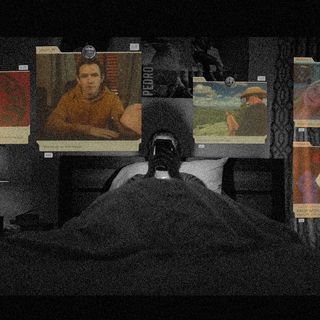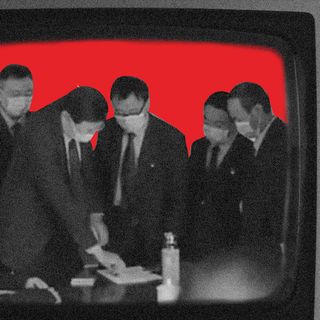
How a Professional Cuddler‑in‑Training Figured Out Emotional Cuddles With Friends
22-year-old Simran used the emotional aspect of cuddling — feeling safe, heard and loved — to maintain digital intimacy with her friends.

In this 10-part series, we explore how Indians are embracing digital connections under the Covid19 lockdown in the absence of in-person intimacy. Here, 22-year-old Simran breaks down how she exchanged virtual cuddles with her friends in isolation.
I’ve always felt really reassured with touch, even without the awareness of how therapeutic it can be. For the past four years, though, I’ve been studying what touch therapy, especially cuddles, can do for physical and emotional intimacy, and also a person’s mental health. It’s liberating because we’re often conditioned to ignore what our bodies are telling us, what our bodies need.
I’m currently in training to be a professional cuddler. I’ve realized it’s a lot more than just physical touch — it’s being aware and being able to communicate your own boundaries and your body’s boundaries. Sure, you experience touch on a daily basis, like a handshake, but for a touch to be therapeutic, for it to feel good, there are a lot of emotional factors that need to be fulfilled.
Under lockdown, the saving grace is that cuddles have an emotional component, which opens up all sorts of avenues for you to feel that same level of comfort with someone even when you’re not physically close to each other. For example, a friend of mine recently got into a discussion with me about how he’s feeling overwhelmed by his body’s demands to simply be held by someone. He told me on the phone “I just want you to hold me, Simi.” I told him it was natural, that he was allowed to feel what he’s feeling because the best part of anything emotionally resembling a cuddle, even virtual, is that it’s a respectful space, where you don’t really question what’s happening. It’s a safe space that is liberating and cathartic, and a space where you have complete control, where you can say no. We discussed his emotional reaction to wanting touch, we discussed what he was missing — he wasn’t missing holding hands with someone, he was craving being held by someone, he was craving a tight, long embrace, and he described those to me in detail.
I listened. From learning how to professionally cuddle, I’ve realised the process doesn’t need to include touch. It’s more about overcoming your anxiety and fear of being vulnerable. And the warmth people feel in a consensual cuddle is that of feeling safe, of overcoming that first boundary. I was there to help him understand his own boundaries and exercise consent. I was there listening to him talk through what his body wants and him realising he was shutting himself off against those urges. I wouldn’t say these conversations can entirely be a substitute for touch, but it definitely gets easier if you can help someone open up emotionally.
Coming back to me, personally, cuddling has always been a reassuring and reaffirming process. It’s incredibly calming without any effort. I can be funny, I can be emotional, I can be angry, I can be feeling anything but feel safe at the same time when I’m cuddling with someone. Yes, cuddling is physical but it can be extremely emotional as well. Under lockdown, I’m restricted to going to hug my mother or my father. It helps with the loneliness, with reminding yourself your body isn’t existing independently from the world. But to constantly feel someone’s reassuring, loving touch is now limited in my life. I’m lucky because I can compensate with the emotional aspect of it. For me, it’s a memory-based nostalgia thing.
I have a friend who I saw every day of our lives before this lockdown. She was extremely averse to touch. But we saw a lot of changes happen under lockdown. We realised the time we shared with each other was a respite from our lives, what even a two-second hug could accomplish for us. It was a process I cherished, and remembering it fills me with a similar range of emotions as when I was actually doing it. Sharing it with my friend also makes me feel loved. When we’re talking on the phone and we both mutually agree that we miss doing that, that acknowledgement can be as reassuring. The sentiment that we feel while we cuddle people we love versus when we speak about it to them, it’s like the act of talking about it is connecting two very different situations seamlessly.
At the end of the day, we do live in a sexually repressed country where every form of touch has been sexualized. The idea of healthy touch is also intimidating. So, you’re invariably adding a cultural and biological roadblock to the whole process. But I’ve understood the crucial part of connecting with anyone the way I’ve known cuddles do is to figure out how to let go. I’m not sure when I’ll be able to do it in person, but I’m learning to do it away from, but with, my friends.
This project was done in partnership with Tinder India.
Related


How a Polyamorous Man Adapted to Sexting Under Lockdown
